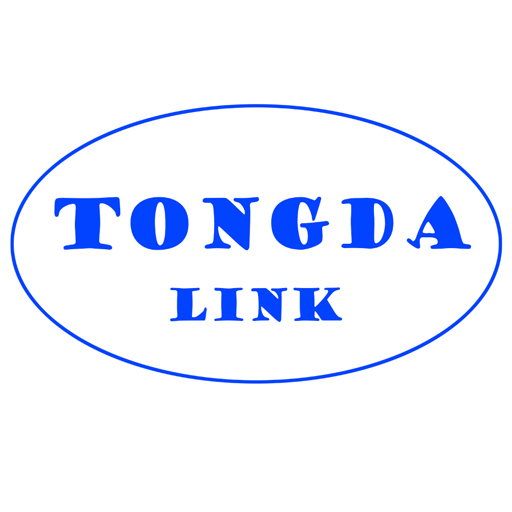Die Casting Tool Making & Die Casting Parts production
Commonly used materials for die-casting products include the following: zinc alloy, aluminum alloy, and magnesium alloy. Aluminum alloy products are often used in the automotive industry, motorcycle industry, aerospace, etc.
We may be doing more than you think.

TONGDA LINK continues to provide customers with better die-casting products and services!
Our die casting factory is now a member unit of China Casting Association Die Casting Branch and a member unit of Guangdong Die Casting Association.
TONGDA LINK die casting factory currently has 9 cold chamber horizontal die casting machines ranging from 350 tons to 900 tons (including: three sets of 350T, one set of 400T, three sets of 500T, one set of 800T, one set of 900T). Using the latest die-casting manufacturing technology to supply high-quality molten aluminum alloy for die-casting production.
At the same time, TONGDA LINK die casting factory is equipped with mold processing equipment, which can manufacture high-precision die-casting molds according to customer requirements, and produce various specifications of precision aluminum alloy die-casting products for customers. The product size is precisely measured by a Swiss-made CMM, and equipped with a CNC machining center and a CNC lathe to precisely process the castings according to customer requirements, and has now formed an annual production capacity of 3,000 tons of aluminum alloy die castings.
Advantages of Die Casting
High Efficiency:
Rapid production of complex, detailed parts with minimal post-processing.
Ideal for mass production due to fast cycle times.
Precision & Consistency:
Achieves tight tolerances (±0.1 mm) and excellent surface finishes.
Ensures uniformity across large batches.
Material Versatility:
Compatible with metals like aluminum, zinc, magnesium, and copper alloys.
Balances strength, lightweight properties, and corrosion resistance.
Cost-Effective at Scale:
Lower per-unit costs for high-volume runs compared to other methods (e.g., CNC machining).
Design Flexibility:
Enables intricate geometries, thin walls, and integrated features (e.g., ribs, threads).
Sustainability:
Minimal material waste (recyclable scrap).
Learn More about Die Casting
High Initial Costs:
Expensive tooling (steel dies) and setup, making it less economical for small batches.
Material Limitations:
Restricted to non-ferrous metals (e.g., aluminum, zinc) with lower melting points.
Not suitable for high-temperature alloys like steel.
Porosity Risks:
Trapped air/gas can create voids, weakening mechanical properties.
May require secondary processes (e.g., vacuum casting, heat treatment).
Design Constraints:
Draft angles and parting lines are mandatory for part ejection.
Undercuts and thick sections can cause defects (e.g., shrinkage, warping).
Lead Time:
Prototyping delays due to die design and manufacturing.
Equipment Size Limits:
Part size is constrained by machine capacity (typically under 50 lbs).
Die casting excels in industries requiring high-volume, precision metal parts, such as:
Automotive (engine components, housings).
Consumer electronics (heat sinks, connectors).
Aerospace (lightweight structural parts).
Die casting primarily uses non-ferrous metals due to their lower melting points and compatibility with the process:
| Material | Advantages | Common Applications |
|---|---|---|
| Aluminum | Lightweight, corrosion-resistant, high thermal/electrical conductivity. | Automotive parts (engine blocks, housings), electronics. |
| Zinc | Excellent dimensional stability, smooth surfaces, cost-effective for small parts. | Door handles, gears, consumer electronics. |
| Magnesium | Lightest structural metal, high strength-to-weight ratio. | Aerospace components, laptop frames. |
| Copper Alloys | Superior thermal/electrical conductivity, wear resistance. | Electrical connectors, heat sinks. |
Why not ferrous metals (e.g., steel)?
-
High melting points (>1500°C) would damage dies and increase costs.
-
Molten iron reacts with die materials, causing premature tooling wear.
Porosity (air/gas trapped in the metal) weakens parts but can be minimized with these strategies:
Design & Process Optimization
Vacuum Die Casting:
Removes air from the die cavity before injection, reducing gas entrapment.
Ideal for high-integrity parts (e.g., automotive transmission cases).
Overflow Wells & Venting:
Channels excess material and trapped gas to overflow areas, which are later trimmed.
Optimized Gating System:
Designs gates and runners to ensure smooth, turbulence-free metal flow.
Post-Processing
Heat Treatment (T5/T6):
Strengthens the alloy and reduces internal stresses.
Hot Isostatic Pressing (HIP):
Applies high heat/pressure to collapse pores, improving density and fatigue resistance.
Impregnation:
Seals surface pores with resin or sealants for leak-proof parts (e.g., hydraulic components).
Material & Parameter Adjustments
Use degassed alloys to minimize dissolved gases.
Control melt temperature and injection speed to balance flow and solidification.
Alternatives to Die Casting
When die casting isn’t ideal (e.g., low volumes, large parts, or ferrous metals), consider these processes:
| Process | Pros | Cons | Best For |
|---|---|---|---|
| Sand Casting | Low tooling cost, large parts (1000+ lbs), ferrous metals. | Rough surfaces, slower, less precision. | Prototypes, heavy machinery, engine blocks. |
| Investment Casting | High precision, smooth finishes, complex shapes. | Expensive for large volumes, lengthy process. | Aerospace turbines, medical implants. |
| Permanent Mold Casting | Better surface finish than sand casting, reusable molds. | Higher upfront cost than sand casting. | Medium-volume aluminum/copper parts. |
| CNC Machining | No tooling needed, tight tolerances, all metals. | High cost per part, material waste. | Low-volume prototypes, complex metal parts. |
| Additive Manufacturing (3D Printing) | Design freedom, no tooling, lightweight structures. | Limited material strength, slow for mass production. | Prototypes, custom medical/dental parts. |

When to Choose Die Casting vs. Alternatives
-
✔️ Choose Die Casting:
-
High-volume runs (>10,000 units).
-
Complex, thin-walled metal parts (e.g., smartphone frames).
-
Prioritizing speed, consistency, and cost-per-part at scale.
-
-
❌ Avoid Die Casting:
-
Low volumes (tooling costs outweigh savings).
-
Extremely large/heavy parts (>50 lbs).
-
Applications requiring ferrous metals or ultra-high-temperature resistance.
-




